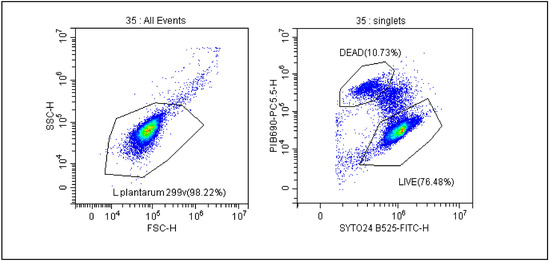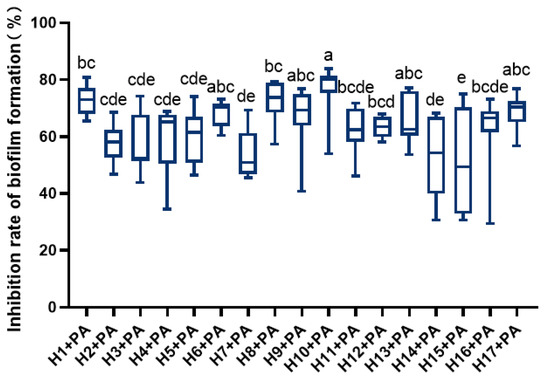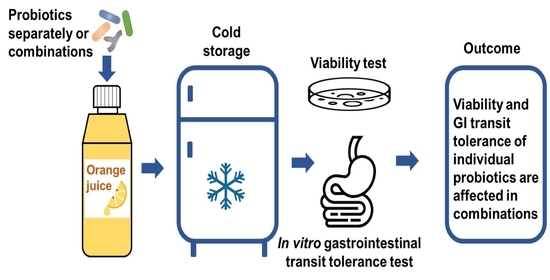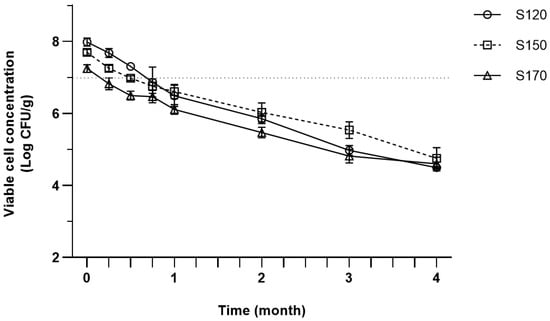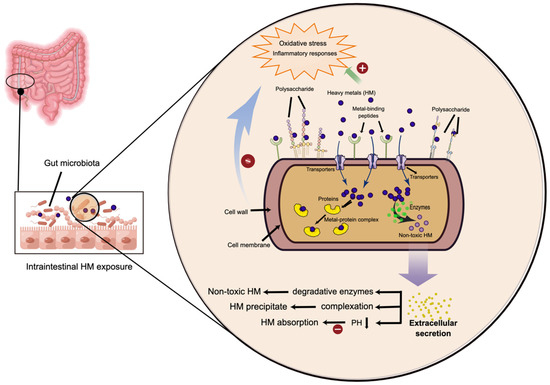Probiotics Research and Innovation in Functional Food Production
A topical collection in Foods (ISSN 2304-8158). This collection belongs to the section "Food Microbiology".
Viewed by 14413
Share This Topical Collection
Editor
 Prof. Dr. Qixiao Zhai
Prof. Dr. Qixiao Zhai
 Prof. Dr. Qixiao Zhai
Prof. Dr. Qixiao Zhai
E-Mail
Website
Collection Editor
State Key Laboratory of Food Science and Technology, School of Food Science and Technology, International Joint Research Laboratory for Probiotics, Jiangnan University, Wuxi 214122, China
Interests: probiotics; functional food; intestinal microbiotics; food biotechnology; food microbiology
Topical Collection Information
Dear Colleagues,
There are common general benefits associated to probiotics: creating a more favorable gut environment and supporting a healthy digestive tract and a healthy immune system. The field of probiotics has advanced considerably in recent years. Available researches, including high-quality animal studies, clinical trials and meta-analyses are focusing on expansion of probiotic functions (e.g., supporting the health of the reproductive tract, oral cavity, lungs, skin and gut-brain axis), advances in targeted-delivery technologies (e.g., nano-based vehicles, micro-based vehicles and pellets), and innovations in encapsulation technologies (e.g., materials used for the encapsulation, environmental conditions and process parameters).
For this reason, a Topical Collection of Foods entitled “Probiotics Research and Innovation in Functional Food Production” is being released. We are encouraging the submission of recent research and review articles related to the further exploration of the beneficial function, the functional mechanism, and the application technology in functional foods of probiotics.
Prof. Dr. Qixiao Zhai
Collection Editor
Manuscript Submission Information
Manuscripts should be submitted online at www.mdpi.com by registering and logging in to this website. Once you are registered, click here to go to the submission form. Manuscripts can be submitted until the deadline. All submissions that pass pre-check are peer-reviewed. Accepted papers will be published continuously in the journal (as soon as accepted) and will be listed together on the collection website. Research articles, review articles as well as short communications are invited. For planned papers, a title and short abstract (about 100 words) can be sent to the Editorial Office for announcement on this website.
Submitted manuscripts should not have been published previously, nor be under consideration for publication elsewhere (except conference proceedings papers). All manuscripts are thoroughly refereed through a single-blind peer-review process. A guide for authors and other relevant information for submission of manuscripts is available on the Instructions for Authors page. Foods is an international peer-reviewed open access semimonthly journal published by MDPI.
Please visit the Instructions for Authors page before submitting a manuscript.
The Article Processing Charge (APC) for publication in this open access journal is 2900 CHF (Swiss Francs).
Submitted papers should be well formatted and use good English. Authors may use MDPI's
English editing service prior to publication or during author revisions.
Keywords
- probiotics
- functional food
- microbiota
- industrial application
- human health
Published Papers (6 papers)
Open AccessArticle
Dynamics of Active Fluorescent Units (AFU) and Water Activity (aw) Changes in Probiotic Products—Pilot Study
by
Katarzyna Sielatycka, Joanna Śliwa-Dominiak, Martyna Radaczyńska, Wojciech Juzwa, Mariusz Kaczmarczyk, Wojciech Marlicz, Karolina Skonieczna-Żydecka and Igor Łoniewski
Viewed by 1830
Abstract
The flow cytometry method (FCM) is a widely renowned practice increasingly used to assess the microbial viability of probiotic products. Additionally, the measurement of water activity (a
w) can be used to confirm the presence of viable cells in probiotic products throughout
[...] Read more.
The flow cytometry method (FCM) is a widely renowned practice increasingly used to assess the microbial viability of probiotic products. Additionally, the measurement of water activity (a
w) can be used to confirm the presence of viable cells in probiotic products throughout their shelf lives. The aim of this study was to investigate the correlation between changes in a
w and variations in active fluorescent units (AFU), a unit commonly used in flow cytometry method, during the aging of probiotic products containing freeze-dried bacteria. We controlled the stability of probiotic products for bacterial counts (using ISO 19344 method) and a
w levels in commercially available capsules containing freeze-dried bacteria such as
Lactobacillus sp. or combinations of
Lactobacillus sp. and
Bifidobacterium sp. in standard conditions (25 ± 2 °C and 60% relative humidity) over a period of 24 months. During this time, the bacterial contents decreased by 0.12 Log
10 in the single-strain product, by 0.16 Log
10 in the two-strain product and by 0.26 Log
10 in the multi-strain product. With the increase in a
w, the number of bacteria decreased but the a
w at the end point of the stability study did not exceed 0.15 in each of the three tested products. FCM combined with a
w is a prospective analysis that can be used to assess the stability of probiotic products, both for its ability to detect bacterial viability and for practical (analysis time) and economic reasons.
Full article
►▼
Show Figures
Open AccessArticle
Screening and Metabolomic Analysis of Lactic Acid Bacteria-Antagonizing Pseudomonas aeruginosa
by
Jianzhou Li, Xiaohua Chen, Ziyan Xie, Lin Liang, Anping Li, Chao Zhao, Yuxi Wen and Zaixiang Lou
Viewed by 1292
Abstract
Pseudomonas aeruginosa is a conditional Gram-negative pathogen that produces extracellular virulence factors that can lead to bloodstream invasion, severely harm tissues, and disseminate bacteria, ultimately leading to various diseases. In this study, lactic acid bacteria (LAB) with strong antagonistic ability against
P. aeruginosa
[...] Read more.
Pseudomonas aeruginosa is a conditional Gram-negative pathogen that produces extracellular virulence factors that can lead to bloodstream invasion, severely harm tissues, and disseminate bacteria, ultimately leading to various diseases. In this study, lactic acid bacteria (LAB) with strong antagonistic ability against
P. aeruginosa were screened, and the regulatory mechanism of LAB against
P. aeruginosa was evaluated. The results showed that the three selected LAB strains had strong inhibition ability on the growth, biofilm formation, and pyocyanin expression of
P. aeruginosa and a promoting effect on the expression of autoinducer-2. Among them,
Lactipantibacillus plantarum (Lp. plantarum) LPyang is capable of affecting the metabolic processes of
P. aeruginosa by influencing metabolic substances, such as LysoPC, oxidized glutathione, betaine, etc. These results indicate that LPyang reduces the infectivity of
P. aeruginosa through inhibition of its growth, biofilm formation, pyocyanin expression, and regulation of its metabolome. This study provides new insights into the antagonistic activity of
Lp. plantarum LPyang against
P. aeruginosa.
Full article
►▼
Show Figures
Open AccessArticle
Viability and In Vitro Gastrointestinal Transit Tolerance of Multispecies Probiotic Combinations Incorporated into Orange Juice and Drinking Water
by
Mahta Moussavi, Javad Barouei, Craig Evans, Michelle C. Adams and Surinder Baines
Viewed by 1330
Abstract
Little is known about how combining probiotics affects the storage survival and functional performance of individual probiotics when incorporated into non-dairy drinks. Viability of
Lacticaseibacillus rhamnosus GG (LG),
Limosilactobacillus reuteri ATCC 55730 (LR),
Bifidobacterium animalis subsp.
lactis BB-12 (Bb), and
Propionibacterium jensenii 702
[...] Read more.
Little is known about how combining probiotics affects the storage survival and functional performance of individual probiotics when incorporated into non-dairy drinks. Viability of
Lacticaseibacillus rhamnosus GG (LG),
Limosilactobacillus reuteri ATCC 55730 (LR),
Bifidobacterium animalis subsp.
lactis BB-12 (Bb), and
Propionibacterium jensenii 702 (PJ), either alone or in multi-species combinations included in orange juice (OJ), were assessed during storage in refrigerated conditions and compared with bottled water (BW). The tolerance of probiotics included in refrigerated OJ to simulated gastrointestinal conditions was also examined. LG and LR viabilities were significantly higher in OJ than in BW (
p ≤ 0.001), while the reverse was evident for PJ. Bb maintained high viability in both drinks. LG-PJ in both drinks and Bb-PJ in BW resulted in greater viabilities among the paired combinations compared to their respective monocultures when incorporated separately (
p ≤ 0.001). The viability of LG in the LG-Bb-PJ combination improved significantly in BW compared with LG alone (
p ≤ 0.001). OJ did not alter bacterial tolerance to simulated gastric juice but diminished tolerance to simulated intestinal juice (SIJ). In all combinations, tolerance of LG and LR to SIJ was improved, whereas tolerance of PJ declined significantly compared with respective monocultures (
p ≤ 0.001). In conclusion, probiotic storage stability and gastrointestinal transit tolerance were species-dependent and affected by carrier type and combinations. These effects should be considered when formulating probiotic products.
Full article
►▼
Show Figures
Open AccessArticle
Spray Drying Encapsulation of Pediococcus acidilactici at Different Inlet Air Temperatures and Wall Material Ratios
by
Gabriella Devina Tirta, Leon Martin, Mario Donald Bani, Katherine Kho, Ihsan Tria Pramanda, Liew Phing Pui, Yu Hsuan How, Crystale Siew Ying Lim and Putu Virgina Partha Devanthi
Cited by 5 | Viewed by 2724
Abstract
Pediococcus acidilactici has gained research and commercial interest due to its outstanding probiotic properties, yet its survival during storage and consumption requires improvement. This study aims to enhance
P. acidilactici survival using spray drying encapsulation. Different inlet air temperatures (120 °C, 150 °C,
[...] Read more.
Pediococcus acidilactici has gained research and commercial interest due to its outstanding probiotic properties, yet its survival during storage and consumption requires improvement. This study aims to enhance
P. acidilactici survival using spray drying encapsulation. Different inlet air temperatures (120 °C, 150 °C, and 170 °C) and whey protein isolate (WPI):gum arabic (GA) ratios (1:1, 3:1, 1:3) were tested. Cell viability was significantly (
p < 0.05) affected by the inlet temperature but not the WPI:GA ratio. Increasing the inlet temperature to 170 °C significantly decreased
P. acidilactici viability by 1.36 log cycles, from 8.61 log CFU/g to 7.25 log CFU/g. The inlet temperature of 150 °C resulted in a powder yield (63.12%) higher than at 120 °C (58.97%), as well as significantly (
p < 0.05) lower moisture content (5.71%) and water activity (a
w 0.21). Viable cell counts in all encapsulated
P. acidilactici were maintained at 5.24–6.75 log CFU/g after gastrointestinal tract (GIT) simulation, with WPI:GA of 3:1 and inlet temperature 150 °C having the smallest log reduction (0.3 log cycles). All samples containing different WPI:GA ratios maintained sufficient viability (>7 log CFU/g) during the first three weeks of storage at 25 °C. These results could provide insights for further developing
P. acidilactici as commercial probiotic products.
Full article
►▼
Show Figures
Open AccessReview
Potential Application of Living Microorganisms in the Detoxification of Heavy Metals
by
Runqiu Chen, Huaijun Tu and Tingtao Chen
Cited by 13 | Viewed by 3793
Abstract
Heavy metal (HM) exposure remains a global occupational and environmental problem that creates a hazard to general health. Even low-level exposure to toxic metals contributes to the pathogenesis of various metabolic and immunological diseases, whereas, in this process, the gut microbiota serves as
[...] Read more.
Heavy metal (HM) exposure remains a global occupational and environmental problem that creates a hazard to general health. Even low-level exposure to toxic metals contributes to the pathogenesis of various metabolic and immunological diseases, whereas, in this process, the gut microbiota serves as a major target and mediator of HM bioavailability and toxicity. Specifically, a picture is emerging from recent investigations identifying specific probiotic species to counteract the noxious effect of HM within the intestinal tract via a series of HM-resistant mechanisms. More encouragingly, aided by genetic engineering techniques, novel HM-bioremediation strategies using recombinant microorganisms have been fruitful and may provide access to promising biological medicines for HM poisoning. In this review, we summarized the pivotal mutualistic relationship between HM exposure and the gut microbiota, the probiotic-based protective strategies against HM-induced gut dysbiosis, with reference to recent advancements in developing engineered microorganisms for medically alleviating HM toxicity.
Full article
►▼
Show Figures
Open AccessEditor’s ChoiceArticle
Screening and Probiotic Potential Evaluation of Bacteriocin-Producing Lactiplantibacillus plantarum In Vitro
by
Yushan Bu, Yisuo Liu, Yinxue Liu, Shaolei Wang, Qiqi Liu, Haining Hao and Huaxi Yi
Cited by 14 | Viewed by 2505
Abstract
Probiotics are gaining attention due to their functions of regulating the intestinal barrier and promoting human health. The production of bacteriocins is one of the important factors for probiotics to exert beneficial properties. This study aimed to screen bacteriocin-producing
Lactiplantibacillus plantarum and evaluate
[...] Read more.
Probiotics are gaining attention due to their functions of regulating the intestinal barrier and promoting human health. The production of bacteriocins is one of the important factors for probiotics to exert beneficial properties. This study aimed to screen bacteriocin-producing
Lactiplantibacillus plantarum and evaluate the probiotic potential in vitro. It was found that
L. plantarum Q7,
L. plantarum F3-2 and
L. plantarum YRL45 could produce bacteriocins and inhibit common intestinal pathogens. These three strains had probiotic potential with tolerance to the gastrointestinal environmental and colonization in the gut, and exhibited various degrees of anti-inflammatory activity and tight junction function in the intestinal barrier. Particularly,
L. plantarum YRL45 could significantly (
p < 0.05) reduce the increase in nitric oxide (NO), prostaglandin E2 (PGE2), necrosis factor-α (TNF-α) and interleukin-1β (IL-1β) induced by lipopolysaccharide (LPS), thereby easing inflammatory response.
L. plantarum F3-2 could remarkably (
p < 0.05) up-regulate the expression levels of
ZO-1,
Occludin and
Claudin-1 in intestinal epithelial injured cells, which was conducive to protecting the intestinal barrier. These findings provided fundamental information about the probiotic properties of bacteriocin-producing
L. plantarum, which suggested that
L. plantarum Q7,
L. plantarum F3-2 and
L. plantarum YRL45 had the potential to be used as novel probiotic strains.
Full article
►▼
Show Figures






